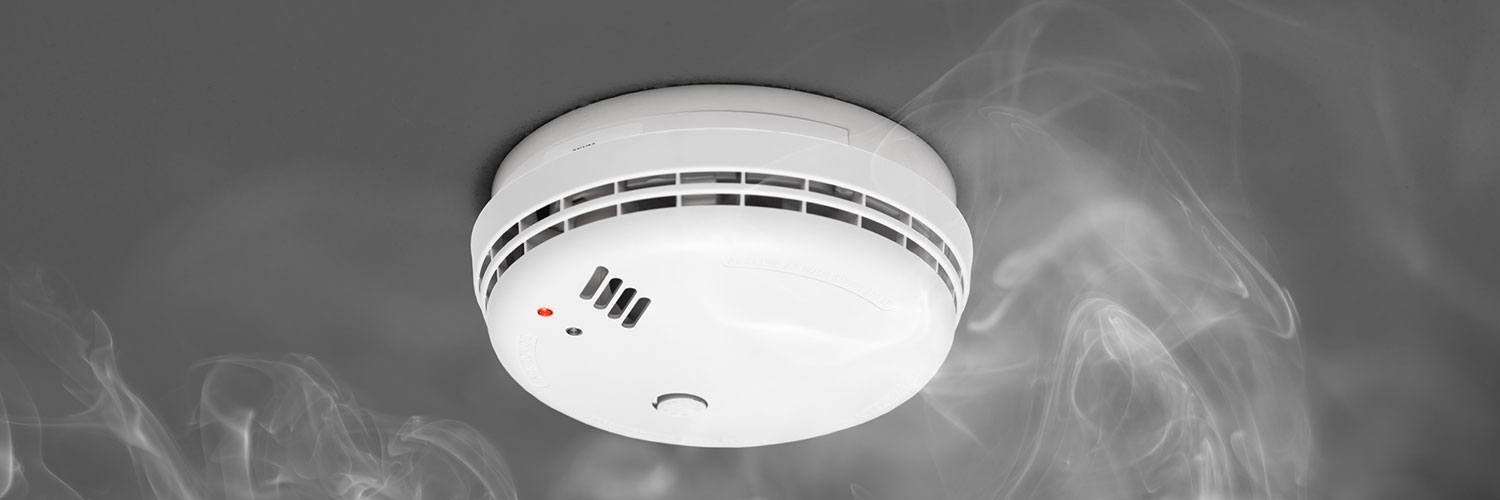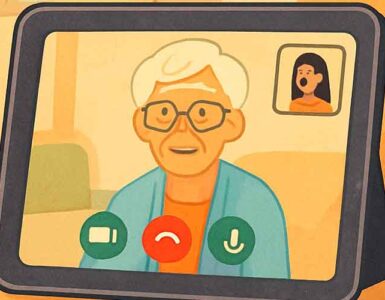You cannot overstate the importance of smoke alarms in home safety. They save lives. But those with hearing disabilities cannot rely on the audible alarms of regular smoke detectors to be alerted to smoke or fire. There are solutions available that will provide people who are deaf or hard of hearing with ways of knowing that their alarm has gone off, but there are other issues that need to be addressed if everyone in the circle of care is to know that there may be an emergency. Here’s what you need to know about smoke alarm systems for people with disabilities.
Alerting the disabled person
The primary method of alerting the deaf person to a smoke detector alarm is a set of strobe lights, either built into the detector or triggered by the detector. ADA-compliant strobe light arrays utilize very bright lights designed to alert the disabled person when awake or asleep. For safety, one of these should be placed in the bedroom as well as in other frequently-occupied rooms.
Alerting the family and loved ones
Smart home products enable us to know what’s going on in our home even when we’re away by notifying us through our mobile devices. Because of this, smart smoke detectors can be important devices for the families of disabled individuals since they will send an alert to their mobile device when the alarm is activated.
Combining the two
There are many capable ADA-compliant smoke detectors for the deaf and hard of hearing, and an increasing number of smart smoke detectors on the market. Unfortunately, there are none that combine both functions in one package. To achieve safety within the home and provide remote notifications, you’ll need a combination of devices. Here’s our best solution.
First Alert Onelink
The First Alert Onelink is a full-featured smart home smoke and CO detector. When connected to WiFi, it will notify anyone with a linked mobile device when an alarm has been triggered in the home. Connection through mobile devices also provides the disabled person in the home with easy control of the device – for example, if they need to reset or test the device.
Features
- Provides smoke and CO detection.
- Notifications to mobile devices.
- Meets UL standards for smoke and CO alarms.
- Hardwired and battery-operated versions available.
Onelink is also compatible with Apple HomeKit, so you can integrate it into a system employing other smart devices, like cameras, thermostats, lighting, security, and more. Onelink retails for $149.99.
First Alert SLED177 Hearing Impaired LED Strobe Light
The powerful strobe lights of the First Alert SLED177 provide ADA-compliant notification to the deaf and hard of hearing. It is compatible and interconnectable with other First Alert smoke detectors so you can create a network of lights throughout the home.
Features
- The SLED177 is hardwired, so there are no batteries to check.
- Different light flashing patterns allow the disabled person to distinguish between different alarms (smoke, CO, etc.).
- Can be part of an extensive network of smoke detectors (up to 18 detectors, of which 12 can be smoke detectors).
- Compatible with other First Alert alarms, including smoke, CO, and heat detectors.
- Meets UL Standards
To ensure proper coverage, LED strobe light notifiers like the SLED177 should be placed in any bedroom used by the disabled person, as well as other rooms that they frequent. The First Alert SLED177 retails for $119.95.
Smart devices that provide home monitoring are very useful tools in assisting disabled individuals to live independently. But as we’ve seen in this case, these smart devices are not always designed to meet all the specific needs of the disabled. With some imagination and a little extra effort, it’s possible to meet the two requirements we’ve set forth here – keeping the person safe in their home while providing a real-time notification system for family and other loved ones who are not close at hand.
Smart technology is evolving and advancing at a rapid pace. If any readers know of any smoke alarm systems for people with disabilities that combine alerting individuals that a smoke alarm is going off and also notify others that there may a smoke-related emergency, please add in the comment section of this article.




























You have, like all others, missed a big, BIG, *B*I*G* point ! ! !
No one stops to think about MAINTENANCE of Smoke Alarms for the physically disabled who live alone.
I see and hear well enough but I CAN NOT climb to test nor to change batteries, period.
OK, the Alarm has to be high on a ceiling to do its function. . However, the Battery and the Test Button need to be on the end of a cable mounted, say, 3-4-ft off the floor.
I can’t climb to change batteries either and I’m trying to find an affordable smoke alarm for disabled
Thank you, me too. I think I have a solution if someone would only make it. The sensor can be adequately high but the controls are low enough that a person who cannot stand can reach it for changing backup batteries or clearing a false alarm. I don’t know all the engineering that this would involve but I am sure it can be done. The sensor would be hard wired. Maybe the control would be hard wired too, and/or wireless. This is just wrong that no one has thought of an accessible way to be safe.
Allen wollscheidt said it best ! I am too old to get on a ladder to change batteries.